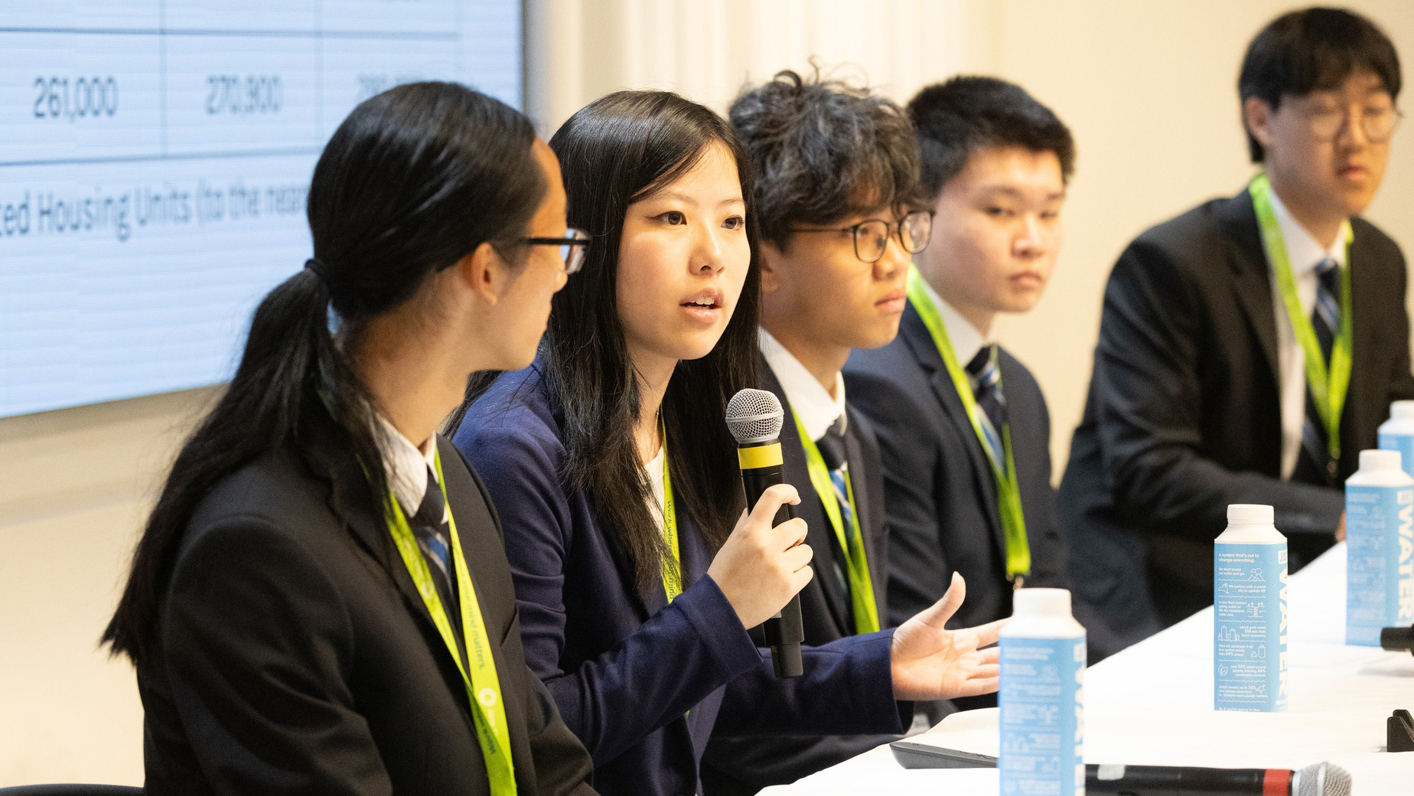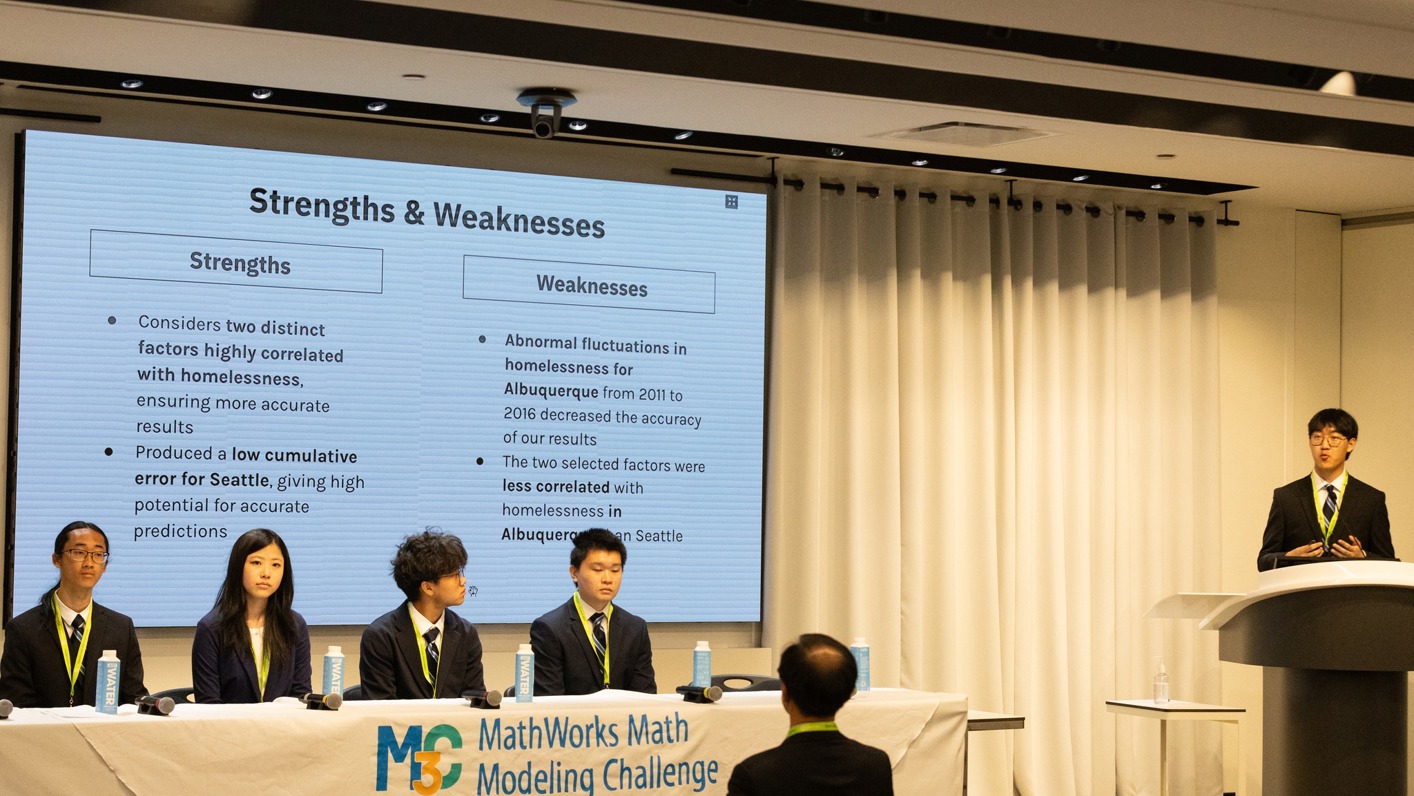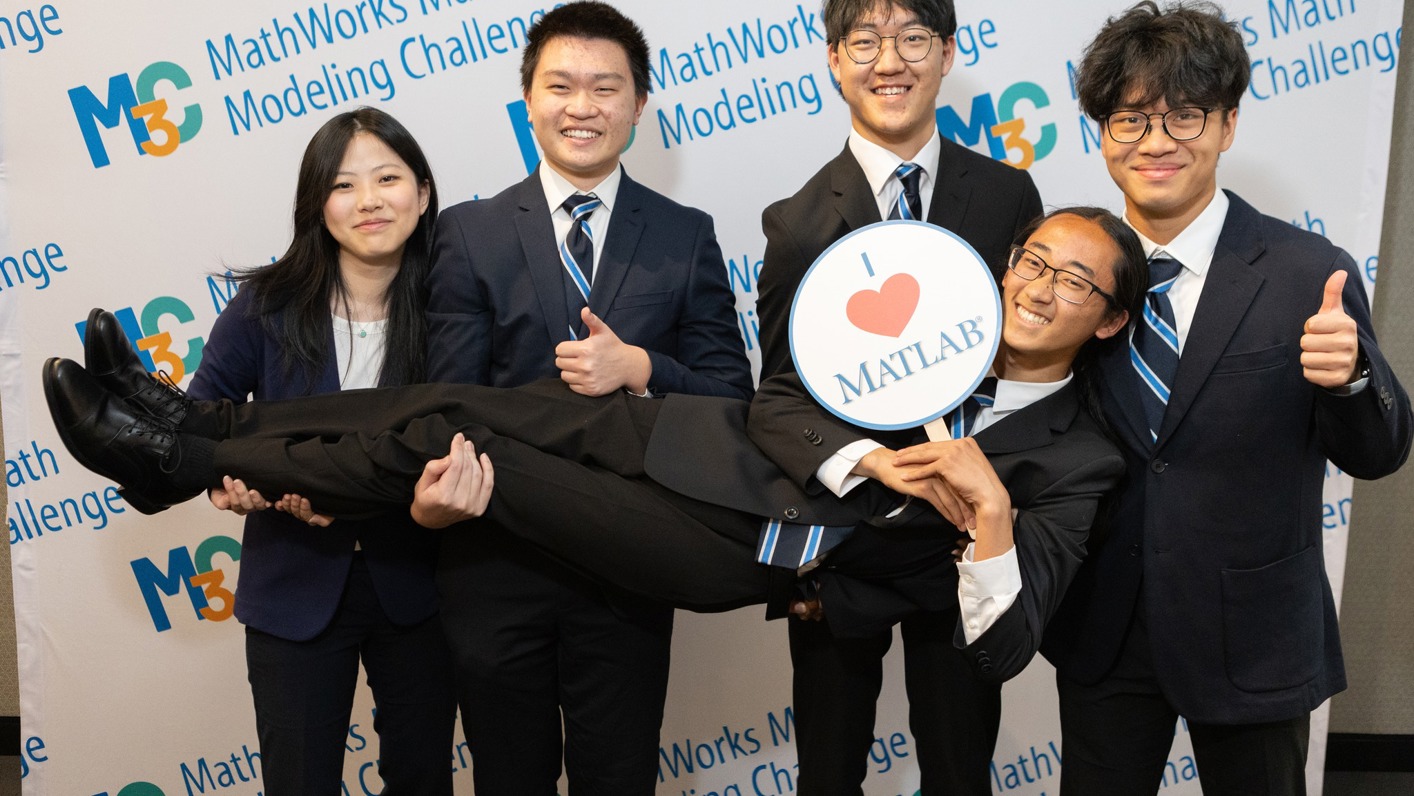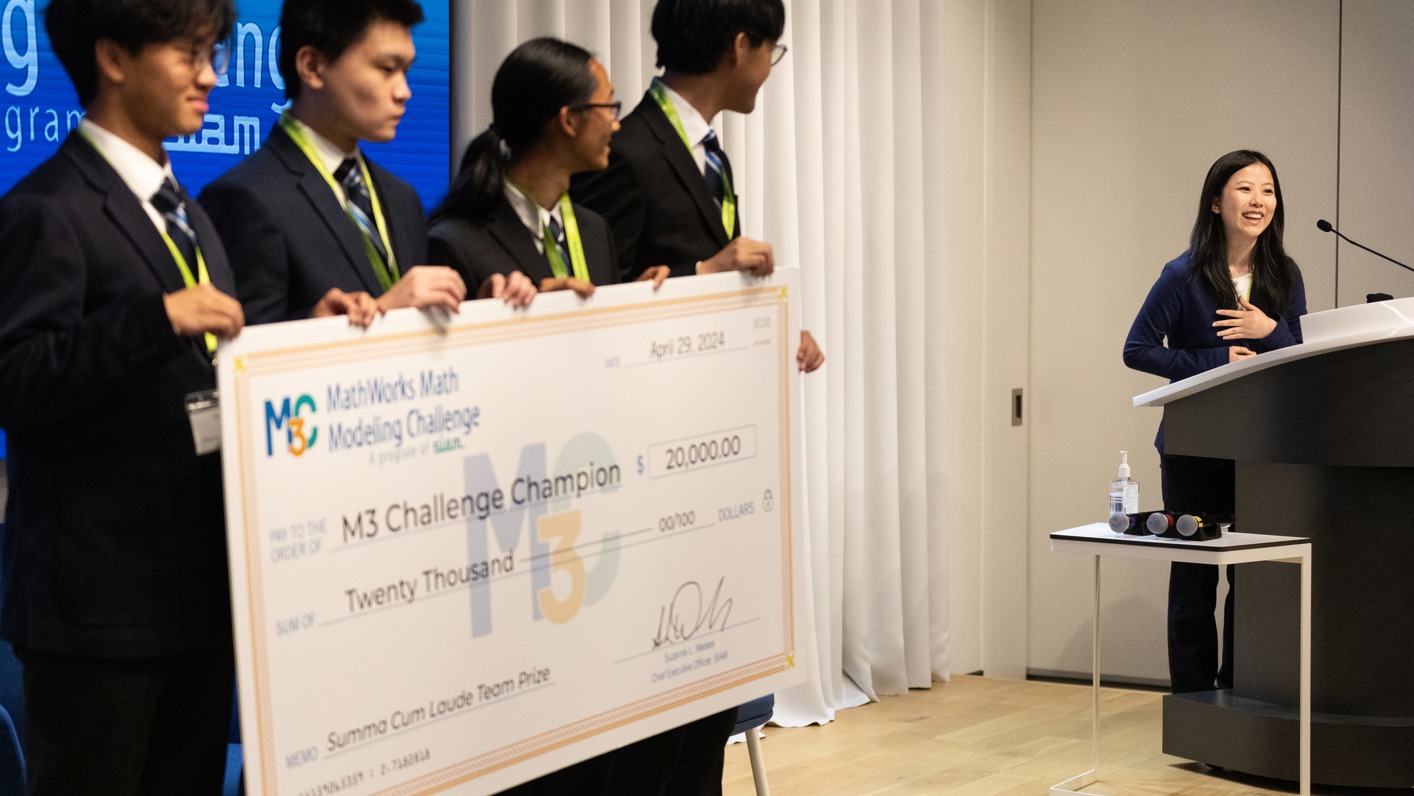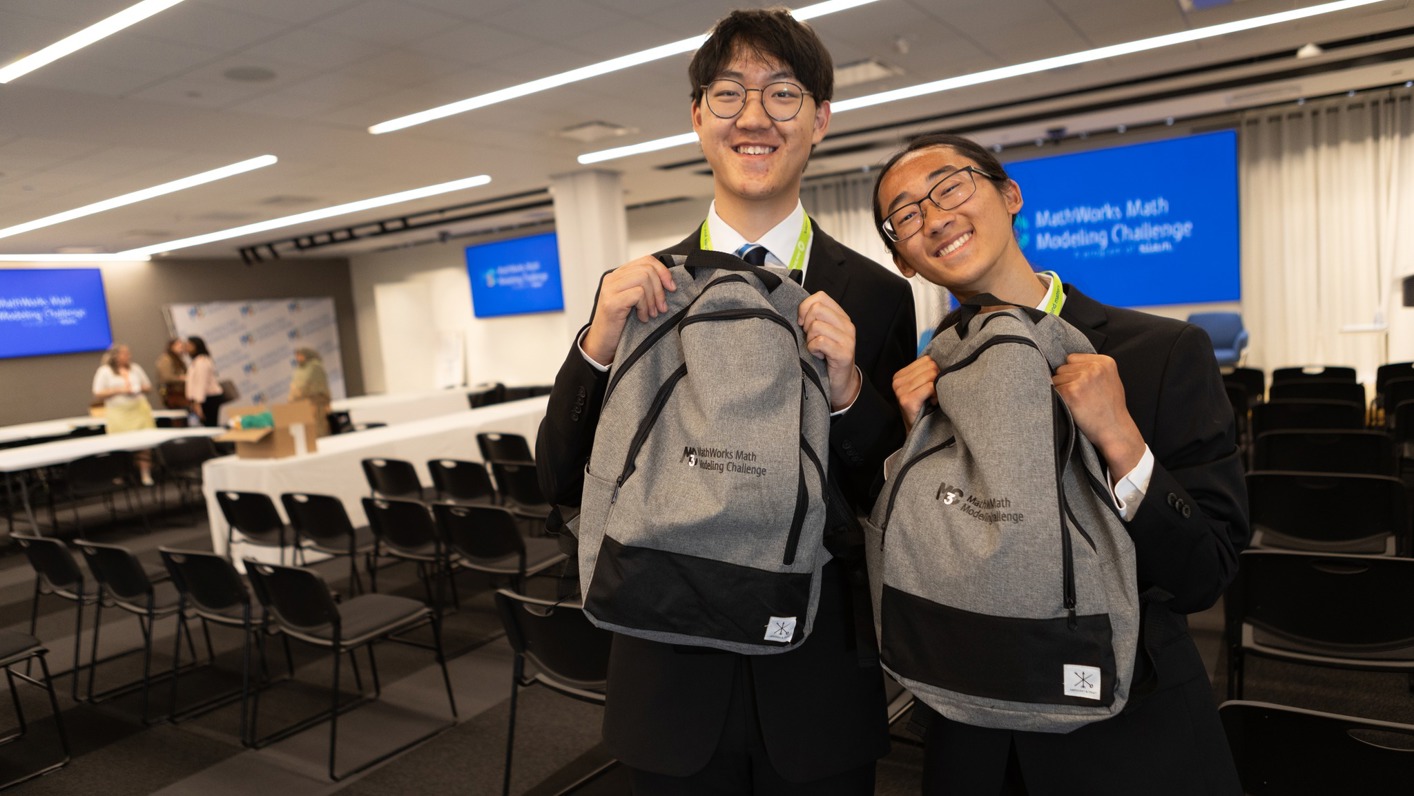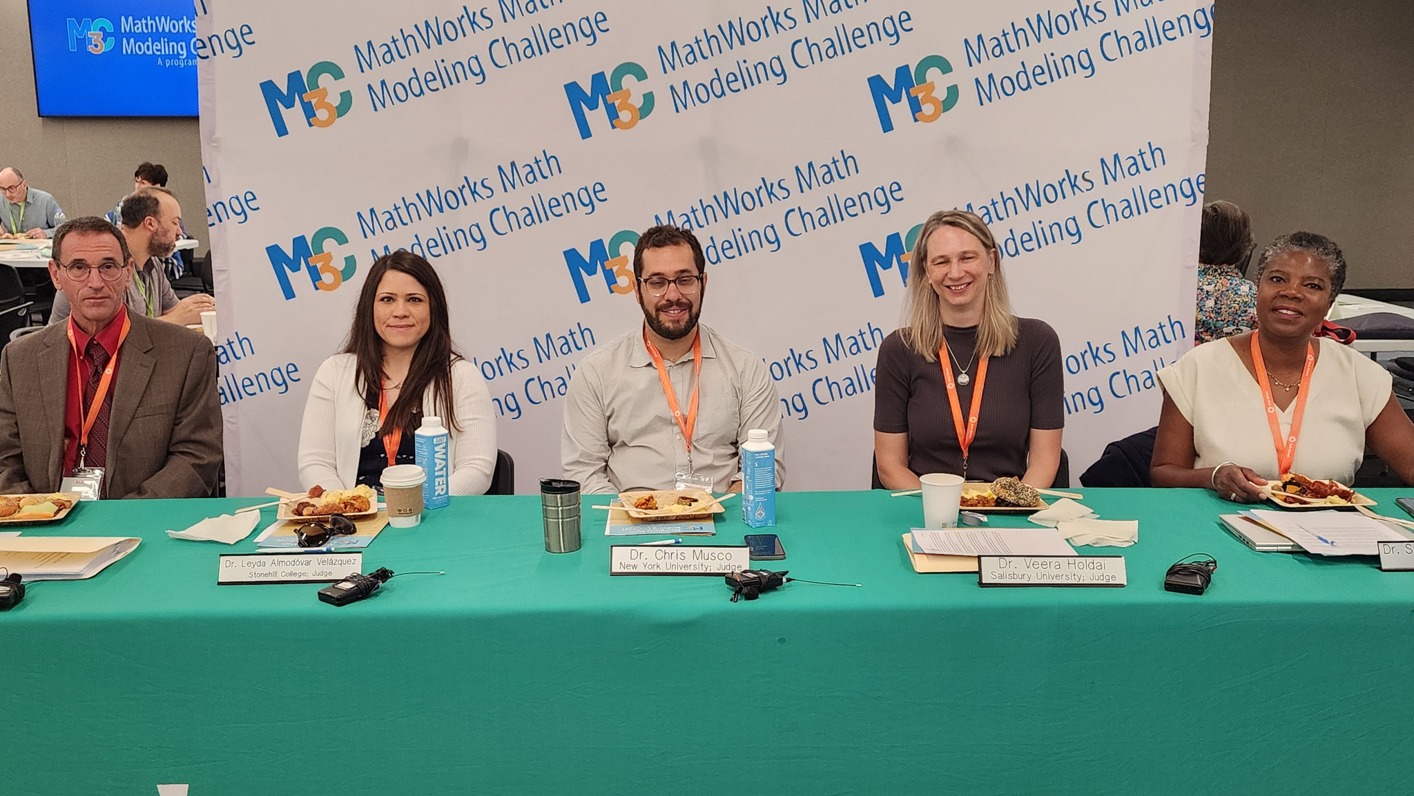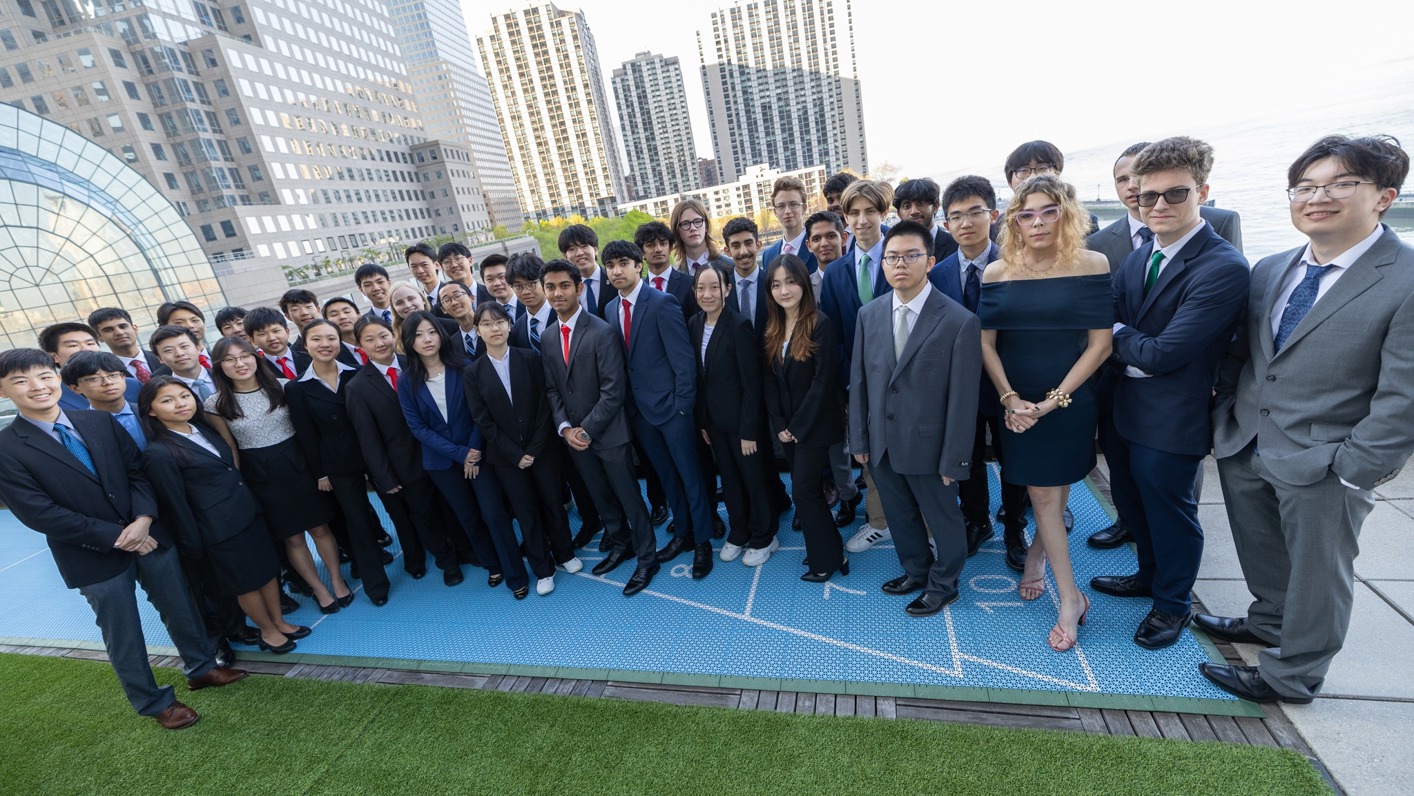Massachusetts High School Students Lauded for Successful Model of U.S. Housing Crisis
2024 MathWorks Math Modeling Challenge Links Homelessness and the Housing Shortage
As the price of goods and services in the U.S. continues to escalate, consumers are struggling to keep pace with inflation, shortages, and other factors that impact their spending habits. These troubles also extend to the housing market. Over the last several decades, the cost of housing has increased more rapidly than people’s incomes — a discrepancy that puts economic pressure on individuals and families who may no longer be able to make rent, purchase a home, or pay an existing mortgage [4]. An overall lack of available housing further complicates this issue and is closely related to another ongoing crisis: homelessness [2, 3].
Homelessness persists in even the wealthiest areas and reached a troubling record high across the U.S. in 2023, having increased by roughly 12 percent from the previous year [2]. Furthermore, a dearth of affordable housing is associated with a 38 percent increase in homelessness in the largest U.S. cities over the last 12 months [1]. There are no quick fixes, as expanding the housing supply is a slow process that requires significant financial investment and administrative planning. Factors such as land restrictions, population growth, financial constraints, and structure longevity all contribute to housing-based policy decisions.
The intertwined nature of the housing and homelessness crises made them a relevant subject for this year’s MathWorks Math Modeling Challenge (M3 Challenge), a program of SIAM with MathWorks as its title sponsor. Now in its 19th year, this annual online mathematics competition is open to U.S. high school juniors and seniors as well as sixth form students in England and Wales. Participating teams of three to five students have 14 consecutive hours during Challenge Weekend to address an open-ended mathematical modeling problem and write a report that explains and validates their solutions. All submitted papers then undergo three rigorous rounds of blind judging by an international panel of 120 Ph.D.-level applied mathematicians, who select the finalists. In late April, the nine finalist teams for M3 Challenge 2024 traveled to New York City and defended their solutions in front of a live panel of judges at Jane Street—a quantitative trading firm—to compete for more than $100,000 in scholarship funds.
Three members of the M3 Challenge Problem Development Committee authored the 2024 prompt: Jen Gorman of Lake Superior State University, Chris Musco of New York University (a 2008 M3 Challenge finalist), and Neil Nicholson of the University of Notre Dame. “We spent the better part of nine months trying to come up with the Challenge question,” Nicholson said. “The sheer number of stories we saw in the news about housing costs and homelessness—particularly on the West Coast—really made us think about these two ideas. Math modeling is about relationships, and while it’s fun to look at a single topic’s relationship with time, there’s something much more real about looking at how two related topics evolve together over time.”
The problem statement involved three related tasks. First, students had to predict changes in the housing supply for two U.S. or U.K. locations over the next 10, 20, and 50 years. Next, they were asked to predict shifts in the homeless population within their two selected areas over the same time frames. Lastly, participants utilized their results to create a model that addressed homelessness in the long term, then considered their model’s adaptability to economic recessions, natural disasters, changing migrant populations, and other unforeseen circumstances.
This year’s first-place team from Phillips Academy Andover in Andover, Mass., included Angeline Zhao, Tianyi Evans Gu, Anthony Yang, Eric Wang, and Yifan Kang. To address the Challenge problem, the group first applied a logistic model to predict the number of available housing units in Seattle, Wash., and Albuquerque, NM, in 2030, 2040, and 2070. “We initially considered various linear models to model the growth in the number of housing units, but they failed to account for the limited land resources available within the cities,” Yang said. “As the number of housing units that can be feasibly built in each city is limited, we used collected data on developable land in the two cities to estimate the maximum number of housing units, and then used that as the carrying capacity.”
After finding an existing carrying capacity for Seattle housing units in the literature, the team used that estimate to calculate their own carrying capacity for Albuquerque. These efforts ultimately led the students to predict a total of 411,600 available housing units in Seattle in 2030, 453,000 in 2040, and 513,000 in 2070. Similarly, they forecasted 261,000 available housing units in Albuquerque in 2030, 270,900 in 2040, and 290,800 in 2070. “When we accounted for random error in our predictions, we found that our errors were at or below five percent for both Seattle and Albuquerque,” Yang said. “This means that the inclusion of the carrying capacity helped tremendously in developing accurate and robust predictions.”
Next, the Andover students assessed the relationship between homelessness and several different variables. “We recognized that it was probable that a number of factors were likely to influence homelessness,” Zhao said. “Rather than attempting to identify a single variable and using that as a prediction, we wanted to account for more of the potential influences.” As such, the group conducted a multivariate analysis that indicated a significant correlation between the homeless population and total housing units, occupied housing units, median household income, and median listing price. They then generated a multiple regression model by combining their previous logistic model for housing units with a linear model for median listing price.
“To perform the multiple linear regression, we had to ensure that our predictor variables were themselves linearly independent,” Zhao said. “We thus narrowed our factors down to total housing units and median listing price. Using our two predictor variables, we were able to predict the homeless population in 10-, 20-, and 50-year increments.” For 2030, 2040, and 2070, their results indicated a respective homeless population of 14,400, 17,100, and 23,200 in Seattle and 3,800, 5,100, and 10,400 in Albuquerque.
Finally, the team created a long-term plan to combat Seattle’s homelessness crisis. The students relied on available data and their previous findings to identify potential significant factors with predictive causality for homelessness, then utilized a Granger causality test to test these factors. They determined that the number of housing units, median listing prices, and deaths by opioid use were all significant. “To quantify the impacts these factors could create, we used a multiple linear regression model and adjusted the data points to predict the resulting change in homelessness,” Zhao said. “We found that increasing housing units and decreasing deaths by opioid use had the greatest impact, which could be targeted through policy changes to exclusionary zoning laws, housing funds or taxes on high-value properties, or awareness programs or referral mechanisms to decrease substance use.”
Their detailed procedure earned the Andover students—who were coached by Khiem DoBa, advisor of the Phillips Academy Math Club—a total of $20,000 in collective scholarship funds. “What I liked most about the winning paper was that the models were not overly complicated,” said Musco, who also served as a judge during the Final Event at Jane Street. “For all three problems, the team used and justified tried-and-true techniques. These methods were appropriate for the relatively limited amount of available data, and they were easy to interpret.”
This group was the first team from Phillips Academy Andover to compete in M3 Challenge, which made their win especially exciting for both the students and coach. Prior to Challenge Weekend, the students reviewed questions and solutions from previous years; once they learned of their finalist status, DoBa worked closely with them to prepare for the in-person presentation and even enlisted other faculty members to serve as mock judges. “It is essential to expose students to real-world modeling because they will soon be the ones who face the real-world problems,” DoBa said. “This was a wonderful opportunity for the students to tackle current issues. In addition, they learned that their mathematical expertise and goodness—a genuine desire to understand and help others in need—are essential in making a positive impact and contributing to their community and the world.”
This type of confidence-building experience is precisely the intended outcome of M3 Challenge. The program—which is managed by Karen Bliss, Senior Manager of Education and Outreach at SIAM—seeks to highlight the importance of mathematical modeling in practical settings and motivate participants to consider future careers in applied mathematics, computational and data science, and technical computing. Students have the unique opportunity to utilize all aspects of their mathematical education while simultaneously honing their creativity, communication skills, and problem-solving strategies.
Encouraged by their first-place finish, the Andover team is excited to further hone their abilities and compete again next year. “M3 Challenge equipped us with some of the most important skills of the 21st century, skills that we will no doubt rely on every day in our future lives,” Gu said. “It truly feels as if the work we were doing throughout the Challenge is tangible and immediately impactful. There is a real sense of empowerment — that the things we learn and the skills we spend time developing have an important place in applications in the real world.”
Phillips Academy Andover’s winning solution paper is available online, as is their final presentation.
References
[1] Colburn, G., & Aldern, C.P. (2022). Homeless is a housing problem: How structural factors explain U.S. patterns. Berkeley, CA: University of California Press.
[2] De Sousa, T., Andrichik, A., Prestera, E., Rush, K., Tano, C., & Wheeler, M. (2023). The 2023 annual homelessness assessment report (AHAR) to Congress. Washington, D.C.: U.S. Department of Housing and Urban Development. Retrieved from https://www.huduser.gov/portal/sites/default/files/pdf/2023-AHAR-Part-1.pdf.
[3] Kelly, M.L., Venkat, M., Fink, K., & Troop, W. (2024, April 23). Housing experts say there just aren’t enough homes in the U.S. NPR. Retrieved from https://www.npr.org/2024/04/23/1246623204/housing-experts-say-there-just-arent-enough-homes-in-the-u-s.
[4] Ludden, J. (2024, January 25). Housing is now unaffordable for a record half of all U.S. renters, study finds. NPR. Retrieved from https://www.npr.org/2024/01/25/1225957874/housing-unaffordable-for-record-half-all-u-s-renters-study-finds.
About the Author
Lina Sorg
Managing editor, SIAM News
Lina Sorg is the managing editor of SIAM News.

Stay Up-to-Date with Email Alerts
Sign up for our monthly newsletter and emails about other topics of your choosing.




